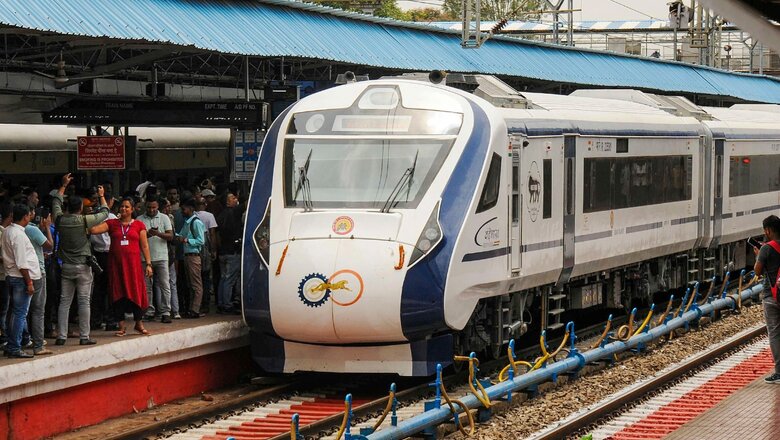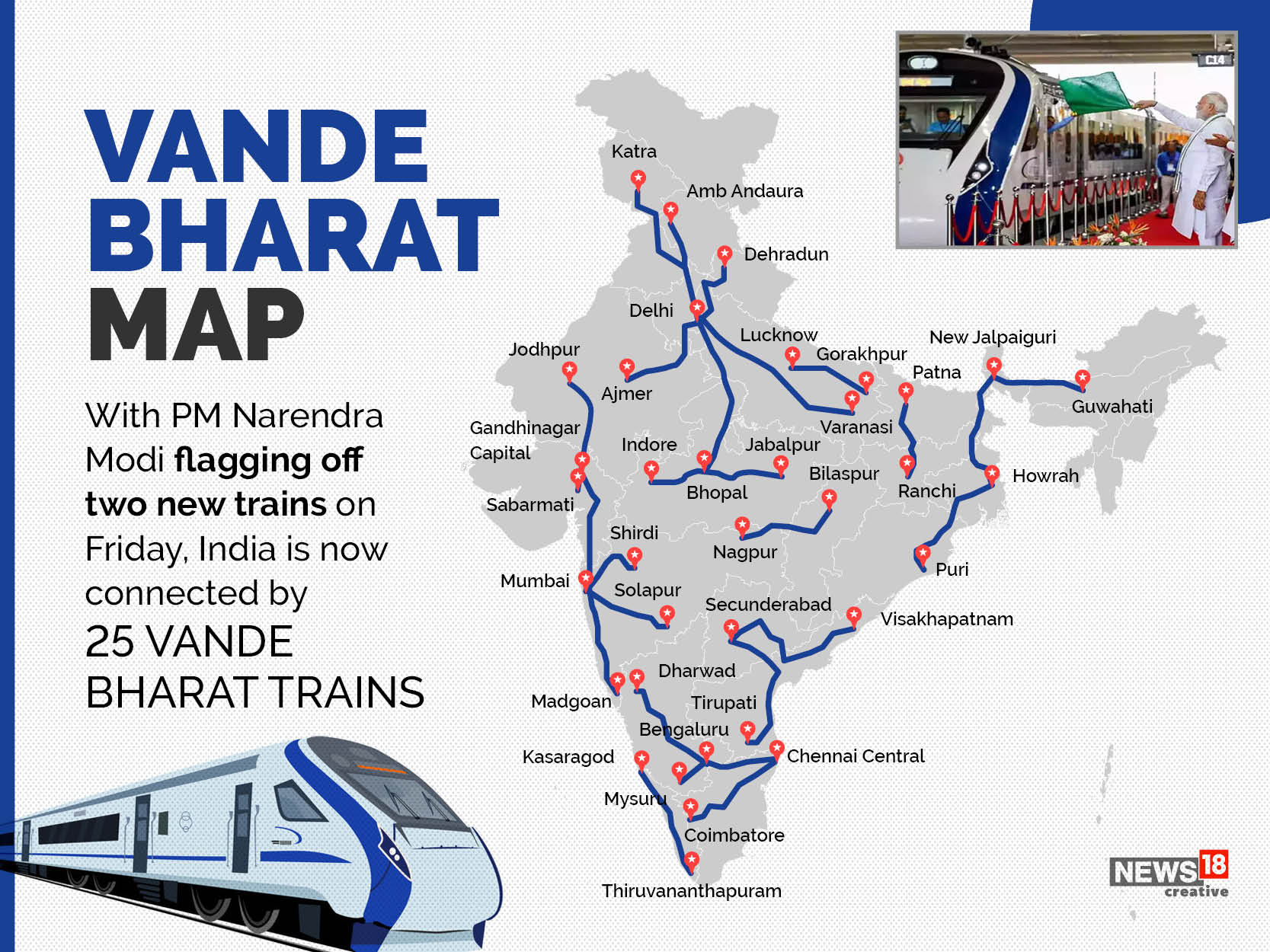
views
Prime Minister Narendra Modi on Friday inaugurated two new Vande Bharat trains between Lucknow and Gorakhpur, and Jodhpur and Sabarmati from Gorakhpur. With these new trains, the total count of Vande Bharat trains running across India is 25.
One Vande Bharat train is used for both up and down journeys and so the number of services these semi-high speed trains are providing is 50.
With the new trains, the count of dedicated Vande Bharat trains for Uttar Pradesh, Rajasthan and Gujarat is two each. Also, the Vande Bharat between Lucknow-Gorakhpur is Uttar Pradesh’s first intra-state semi-high speed train. The first Vande Bharat for India, inaugurated in February 2019, was between Uttar Pradesh’s Varanasi and Delhi.
National Capital Has Highest Vande Bharat Trains
Delhi is the only city in India that has six dedicated Vande Bharat trains. The national capital is connected with Dehradun, Ajmer, Varanasi, Katra, Bhopal, and Amb Andaura with these semi-high-speed trains.
The next in line is Maharashtra, which has five Vande Bharat trains. Of the five, four are operational from Mumbai — for Gandhinagar, Shirdi, Sholapur, and Madgoan. Another train connects Nagpur and Bilapsur.

With the latest Vande Bharat for Uttar Pradesh, the state is connected with four of these trains though not all of these are dedicated. Uttar Pradesh has two dedicated Vande Bharat trains – Lucknow and Gorakhpur and Delhi and Varanasi. Two other trains, Delhi-Dehradun and Delhi-Bhopal – have stoppages in the state.
Madhya Pradesh has three Vande Bharat trains, all dedicated to the state.
Punjab, Haryana Await Dedicated Vande Bharat
Situated next to the national capital, at least three Vande Bharat trains that originate from Delhi cross Haryana. However, the state is yet to get any dedicated Vande Bharat train. The trains from Delhi for Ajmer, Katra, and Amb Andaura have stoppages in Haryana.
Similarly, the Delhi-Katra train also stops in Ludhiana, making it the sole station in Punjab that has access to Vande Bharat. However, there are no dedicated trains for any part of Punjab.
Chandigarh shares a similar fate. Even though the Delhi-Amb Andaura Vande Bharat stops here, the dedicated Vande Bharat is missing.
UP Sixth on List for Intra-state Vande Bharat
In February, Maharashtra became the first state to have an intra-state Vande Bharat train. In fact, in one go, the state got two intra-state semi-high speed trains both operational from Mumbai — one for Shirdi and another for Solapur.
In April, Tamil Nadu was added to the list with Chennai Central-Coimbatore Vande Bharat. The same month, Kerala was also made a part of the group with Kasaragod-Thiruvananthapuram Central Vande Bharat.
In June, Madhya Pradesh made an entry in the list with two pairs of trains from Bhopal — one for Jabalpur and another for Indore. At the same time, with the Bangalore-Dharwad Vande Bharat, Karnataka became the fifth state to have intra-state Vande Bharat.
Now, with the inauguration of the train between Lucknow and Gorakhpur, Uttar Pradesh is the sixth state in the country to have an intra-state Vande Bharat.
Northeast Awaits Electrification
Even though almost all the regions of the country are connected with at least one Vande Bharat, the northeast awaits its turn.
Apart from Assam, the north-eastern states in India are waiting to get a Vande Bharat. According to the ministry, lack of electrification is the main reason behind this.
“Vande Bharat can only be operated on the routes that are electrified. The electrification of routes in the northeast is not completed, hence, these trains cannot operate there,” a ministry official told News18, seeking anonymity.


















Comments
0 comment